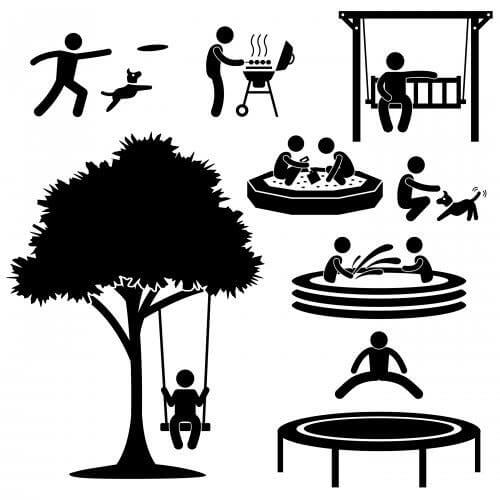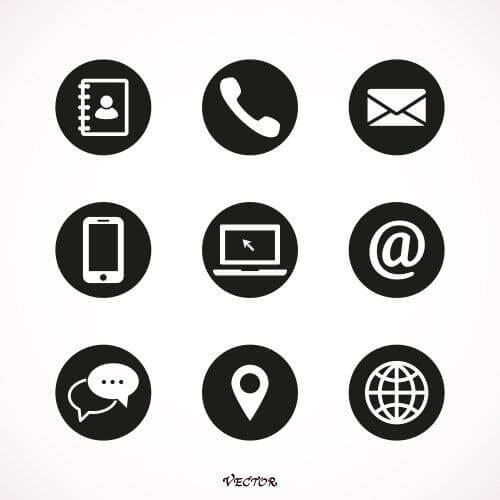Discover Pictograms and Their Uses


Written and verified by the psychologist Ana Couñago
Augmentative and alternative communication systems are ways of expressing yourself through non-verbal codes. For example, pictograms are very useful, as they facilitate the communication of children with special educational needs and difficulties related to language production. Keep reading to discover pictograms and their uses.
“Offering children illustrations is expanding borders, giving them a new world full of possibilities and sensations we can extrapolate to other facets of learning.”
– Amparo Ruiz Espinosa –
Pictograms and their uses
Pictograms are visual elements that convey a certain meaning. In other words, they’re images, drawings, symbols, or iconic signs that represent, in a simple and clear way:
- Objects.
- Figures.
- Actions.
- Animals.
- People.
- Situations.
- Feelings.
- Concepts.
This way, reality is transformed into images, for its correct interpretation. Children with oral and written communication problems can use pictograms to:
- Express ideas and thoughts.
- Compensate for communication limitations.
- Understand the messages that others transmit.

Therefore, this symbolic system is essential for these children to understand the world around them and establish optimal social relationships.
“Language is the necessary means of communion; it’s the one indispensable instrument for creating the ties of the moment without which unified social action is impossible.”
– Bronislaw Malinowski –
Where can you find them?
An ideal platform to download the necessary pictograms is the Aragonese Portal of Augmentative and Alternative Communication (ARASAAC) pictographic system. This website offers an extensive catalog of graphic resources, tools, and materials focused on the use of pictograms.
This inclusive project was financed by the Department of Education, Culture, and Sports of the Government of Aragon. In addition, the General Direction of Innovation, Equity, and Participation with the collaboration of the Aragon Center for Technologies for Education (CATEDU) and the Public School of Special Education in Alborada (Zaragoza) coordinated it.
The use of pictograms
Experts often use pictograms with children with Autism Spectrum Disorder in order to promote social communication through the PECS (Picture Exchange Communication System) program. This consists of the exchange and request of images or pictograms as a basic communicative function.
In addition, to promote these children’s autonomy, many schools signal the common areas on the campus with pictograms (the gym, the cafeteria, the patio, the music room, etc.).
They usually place these visual indicators at the entrance door that corresponds to each site. This way, the orientation of these students in their schools is enhanced, which allows them to identify the room and the activity that takes place in it.

In fact, as a resource to foster diversity and social inclusion, various towns and cities are placing pictograms in the areas most frequented by citizens (the pharmacy, the market, the hospital, etc). These small illustrations are also used to:
- Facilitate the reading and acquisition of concepts through stories, books, and documents illustrated with pictograms.
- Structure time and space through graphic agendas and calendars.
- Enhance social skills and personal autonomy with emotional management exercises and petition panels.
- Anticipate the activities and tasks to be carried out with informative panels.
Some considerations for pictograms and their uses
It should be noted that this augmentative and alternative communication system should be used as a way to support language. Thus, people use pictograms to promote the functional and spontaneous manifestation of communication, while stimulating oral language.
In short, children with special educational needs due to language development problems can benefit from pictograms and their uses to improve their evolution in this learning area.
Augmentative and alternative communication systems are ways of expressing yourself through non-verbal codes. For example, pictograms are very useful, as they facilitate the communication of children with special educational needs and difficulties related to language production. Keep reading to discover pictograms and their uses.
“Offering children illustrations is expanding borders, giving them a new world full of possibilities and sensations we can extrapolate to other facets of learning.”
– Amparo Ruiz Espinosa –
Pictograms and their uses
Pictograms are visual elements that convey a certain meaning. In other words, they’re images, drawings, symbols, or iconic signs that represent, in a simple and clear way:
- Objects.
- Figures.
- Actions.
- Animals.
- People.
- Situations.
- Feelings.
- Concepts.
This way, reality is transformed into images, for its correct interpretation. Children with oral and written communication problems can use pictograms to:
- Express ideas and thoughts.
- Compensate for communication limitations.
- Understand the messages that others transmit.

Therefore, this symbolic system is essential for these children to understand the world around them and establish optimal social relationships.
“Language is the necessary means of communion; it’s the one indispensable instrument for creating the ties of the moment without which unified social action is impossible.”
– Bronislaw Malinowski –
Where can you find them?
An ideal platform to download the necessary pictograms is the Aragonese Portal of Augmentative and Alternative Communication (ARASAAC) pictographic system. This website offers an extensive catalog of graphic resources, tools, and materials focused on the use of pictograms.
This inclusive project was financed by the Department of Education, Culture, and Sports of the Government of Aragon. In addition, the General Direction of Innovation, Equity, and Participation with the collaboration of the Aragon Center for Technologies for Education (CATEDU) and the Public School of Special Education in Alborada (Zaragoza) coordinated it.
The use of pictograms
Experts often use pictograms with children with Autism Spectrum Disorder in order to promote social communication through the PECS (Picture Exchange Communication System) program. This consists of the exchange and request of images or pictograms as a basic communicative function.
In addition, to promote these children’s autonomy, many schools signal the common areas on the campus with pictograms (the gym, the cafeteria, the patio, the music room, etc.).
They usually place these visual indicators at the entrance door that corresponds to each site. This way, the orientation of these students in their schools is enhanced, which allows them to identify the room and the activity that takes place in it.

In fact, as a resource to foster diversity and social inclusion, various towns and cities are placing pictograms in the areas most frequented by citizens (the pharmacy, the market, the hospital, etc). These small illustrations are also used to:
- Facilitate the reading and acquisition of concepts through stories, books, and documents illustrated with pictograms.
- Structure time and space through graphic agendas and calendars.
- Enhance social skills and personal autonomy with emotional management exercises and petition panels.
- Anticipate the activities and tasks to be carried out with informative panels.
Some considerations for pictograms and their uses
It should be noted that this augmentative and alternative communication system should be used as a way to support language. Thus, people use pictograms to promote the functional and spontaneous manifestation of communication, while stimulating oral language.
In short, children with special educational needs due to language development problems can benefit from pictograms and their uses to improve their evolution in this learning area.
All cited sources were thoroughly reviewed by our team to ensure their quality, reliability, currency, and validity. The bibliography of this article was considered reliable and of academic or scientific accuracy.
- Fundación, O. N. C. E. (2013). Pautas de diseño de pictogramas para todas las personas. Dirección de Accesibilidad Universal de la Fundación ONCE.
- Herrera, G., Casas, X., Sevilla, J., Rosa, L., Pardo, C., Plaza, J. y Le Groux, S. (2012). Pictogram Room: Aplicación de tecnologías de interacción natural para el desarrollo del niño con autismo. Anuario de Psicología Clínica y de la Salud, 8, 41-46.
This text is provided for informational purposes only and does not replace consultation with a professional. If in doubt, consult your specialist.








